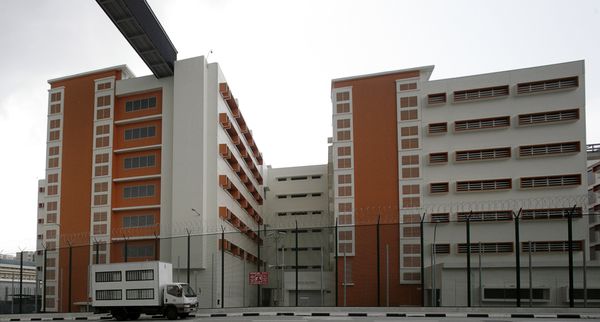The last time there was a rail strike in America then-President George H.W. Bush said "it ought to end the day it begins."
That's pretty much how it worked out.
$2 Billion Every Day
The strike began just after midnight on June 24, 1992 and the next day both houses of congress passed a bill that banned strikes by railroad workers and lockouts by railroads against their employees. Bush promptly signed it into law.
Now the country is facing the possibility of another railroad strike, which could threaten the nation's economy, already contending with inflation, supply chain challenges and the upcoming holiday shopping season.
Freight rail accounts for around 40% of U.S. long- distance ton-miles — more than any other mode of transportation — and hauls about one-third of the country’s exports, according to the Association of American Railroads.
A nationwide rail shutdown could cost more than $2 billion every day, the association said.
Looming Deadline
Ten out of 12 labor unions have reached tentative agreements with the railroad carriers.
However, the two biggest rail unions in the country, the Brotherhood of Locomotive Engineers and Trainmen and the SMART Transportation Division, have not reached agreements.
White House officials are holding emergency meetings before a Sept. 16 deadline.
Analysts at Deutsche Bank said that if there is a strike, they would expect a response similar to 1992, where Congress passes a law settling the labor dispute, which most likely will mandate the President's Emergency Board (PEB) recommendations as being legally binding on both parties.
"It could also extend the cooling period, impose a new and final arbitration process, or create its own compromise," the note said. "Either way, while a strike would be disruptive, we think it would be very short lived."
The two unions issued a statement on Sept. 11 saying the nation’s largest railroads began warning major shippers that they are declaring an embargo on certain types of new shipments.
Unions vs. Management
"The railroads are using shippers, consumers, and the supply chain of our nation as pawns in an effort to get our unions to cave into their contract demands knowing that our members would never accept them," the statement
Union officials said "our members are being terminated for getting sick or for attending routine medical visits as we crawl our way out of a worldwide pandemic."
The National Railway Labor Conference, which is representing management, said rail employees receive up to five weeks of vacation in addition to up to 14 paid holidays and/or paid leave days, depending on craft and seniority.
The conference said that operating craft employees also can “mark off” – or temporarily remove themselves from service – for any reason, as long as they maintain a reasonable level of overall availability under carrier attendance policies.
"Against this backdrop, it is simply untrue to assert that employees cannot take any time off to attend to things like preventative medical exams," the conference said.
'Supply Chain Crisis'
BNSF, a division of Berkshire Hathaway (BRK.A), sparked controversy earlier this year it introduced its “Hi-Viz” attendance policy, which relied on a point system for attendance.
Union officials said the policy violated bargaining agreements, while the railroad said it needed to update its attendance policy and remain competitive.
The union was preparing to go on strike but a federal judge blocked the action, agreeing with BNSF that "a strike would exacerbate our current supply-chain crisis."
BNSF reevaluated the Hi-Viz system and implemented some changes, but union officials maintained the policy was still flawed.
The railroad industry is losing workers. An October report from The Bureau of Labor Statistics said the industry lost 40,000 jobs from November 2018 to December 2020.
The report cited such factors as decreased reliance on coal as a resource, an uncertain trade environment, and Precision Scheduled Railroading, a new method of scheduling operations.
"The COVID-19 pandemic compounded these factors and affected rail transportation employment as a fourth factor," the report said.
'The Labor Market is Tight'
Gary Regan, president of the Transportation Trades Department, AFL-CIO, said in an April 12 letter to the Transportation Trades Department, AFL-CIO that "carriers have spent the last several years slashing tens of thousands of jobs across every craft, without regard to the impact this would have on the provision, quality, or frequency of service."
During a July 22 second-quarter analysts' call, CSX (CSX) CEO Jim Foote said "our ability to hire and retain new workers, which is vital to improving our service and growing the business, remains challenged."
"We are not alone in facing this problem," Foote said, according to a transcript of the call. "The labor market is tight, prospective recruits have many job options and the pandemic has had a profound effect on employees' work and lifestyle preferences.
Foote said increasing train and engine employee headcount "is the key factor necessary for improved service and network performance and our hiring efforts will continue."
"Our aim is still to reach an active transportation headcount of 7,000 as soon as possible," he said.







